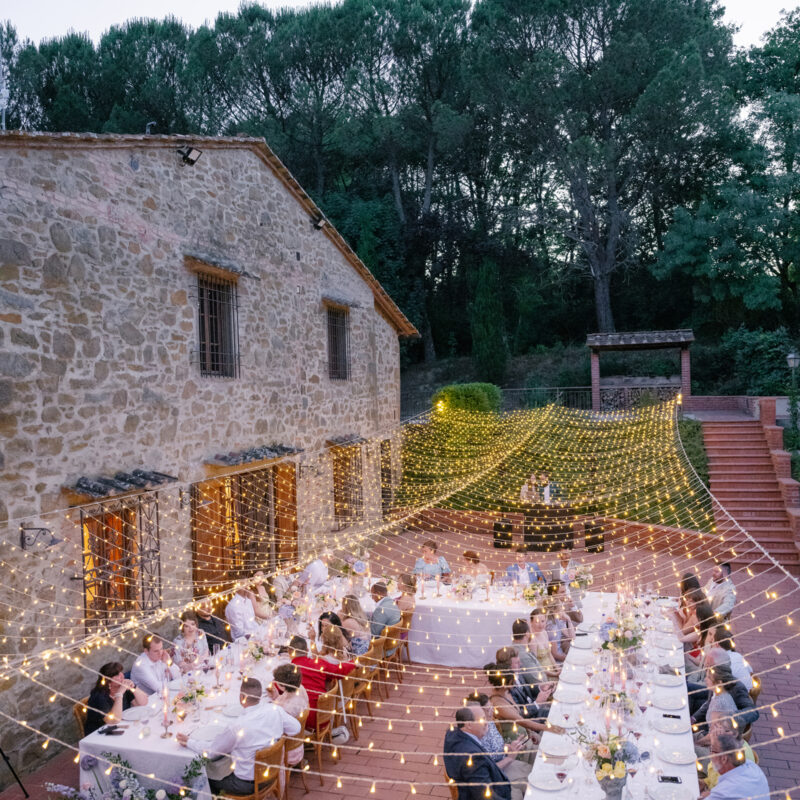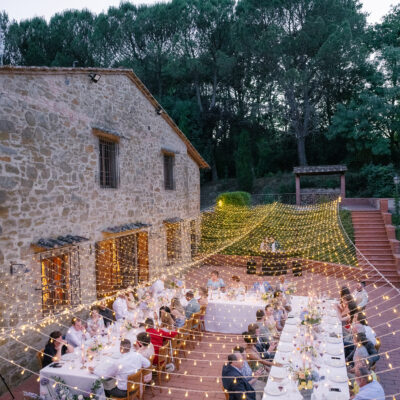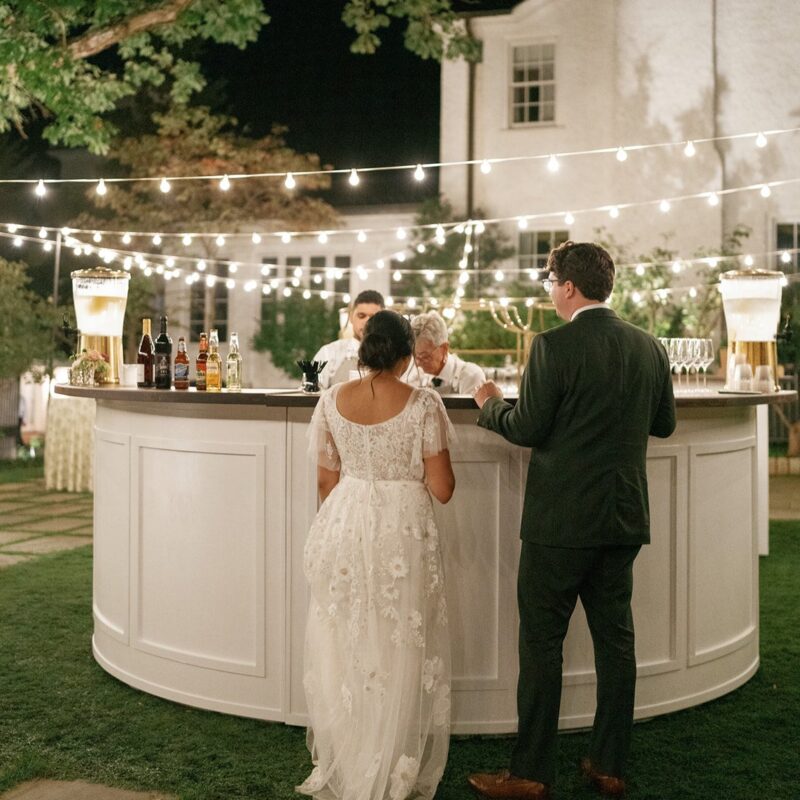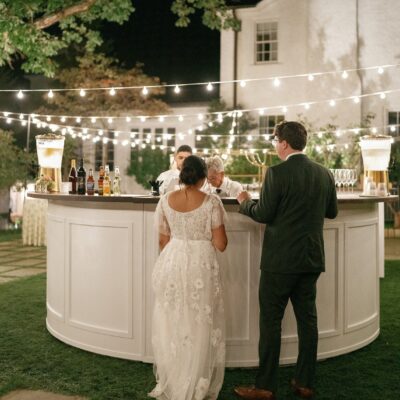Richard and Linda Shank loved their last house, which he’d designed for them in Ednam Forest. But it had two problems. One was the lack of a view. The other was deer.
During their 20 years there, he said, “The deer took over our landscaping.” When they decided to relocate, they searched for a site with views, and found unbeatable vistas at the top of a mountain in Ivy. Shank set to work on a design that would include a “deer-free zone” in the form of a courtyard.
Three sides of the courtyard would be formed by the house—a central portion and two wings. Rather than a high wall to mark the fourth side, there is a vanishing-edge pool. The whole house is oriented toward this view: the Blue Ridge to the northwest, a carpet of woods and fields, and the changing sky reflected in the pool.

In the kitchen, cabinets are 30″ deep instead of the standard 24″, leaving plenty of workspace. Photo: Andrea Hubbell
“I wouldn’t want to drive to the top of a mountain and not see anything,” Shank said.
Since the couple moved here in 2001, they’ve found that the courtyard’s dining area draws them outside much of the year for meals. Even from inside, wide expanses of glass make the view a constant presence. Upon entering the house, one immediately confronts the view through a tall bank of windows, and many corners feature wraparound windows to visually draw the outdoors in.
Working better
Sublime prospects aside, the house is both beautiful and highly functional within its brick walls.
Shank had designed two previous houses in Charlottesville for his family. With the couple’s two children grown, this was to be “a house to suit us through older age.” That means low-maintenance and easy to clean. Though it has three levels, the house facilitates one-story living, and there is an elevator shaft awaiting an elevator should it ever be needed. (The basement level houses two guest bedrooms, a garage, and a wine cellar; upstairs, an office affords views of the mountains.)

The wine room is completely underground, and has a cork ceiling and “barrel stave”-look walls (sort of an architectural joke). Photo: Andrea Hubbell
Many decisions here grew from a desire to make life run smoothly. “My ancestry goes back to the Swiss,” Shank explained. “Form follows function. It’s got to work.” For example, each occupant of the master bedroom has a dedicated pathway from the customary side of the bed, around the corner to a vanity (extra high for ergonomics) and a water closet.
Similarly, the laundry room is nearby to the dressing area, and the “wet zone” (shower stall, tub, and sauna) opens onto the courtyard for easy access to pool and hot tub
Nearly all storage is built in, eliminating the need for many pieces of furniture beyond the carefully chosen, modernist-style seating and tables that animate the living spaces. One of the house’s signature elements is the dining area, demarcated by two floor-to-ceiling banks of built-in mahogany cabinets. These separate the dining area from the adjacent living room and kitchen, but also make a place to tuck away linens, hide a wet bar, and even include doors that can close off the view of the kitchen. Their smooth surfaces are uninterrupted by pulls or knobs.
Shank designed the kitchen, with its black granite countertops and white wooden cabinets, for maximum efficiency. The galley arrangement permits an easy flow from refrigerator to prep area, then to cook surface, dining room, and back to the cleanup zone. A separate coffee area and bar stools flank one side of the central workspace, while the other side houses cookbooks and music storage.
Though none of the rooms in the house feel cavernous, they are spacious, and Shank permits a certain grandeur to be present—as in the sizeable vent hood that becomes almost a sculptural piece within the kitchen. There’s a similar boldness to the large circular window in the living room. “I think of it as a porthole,” Shank said, pointing out that its diameter is the same as that of the hot tub it looks onto.

The hallway between the master bathroom and the closet is defined by glass block walls and a skylight overhead. Photo: Andrea Hubbell
Top-notch materials—warm French limestone floors, for one—bring a luxurious feel to the house, while modernist detailing keeps it clean. There are no baseboards, and most closet doors lack hardware so that they disappear into the walls.

Each occupant of the master bedroom has a pathway to the vanity and bathroom from his or her side of the bed. Photo: Andrea Hubbell
Shallow arcs are a motif throughout, the largest instance being the curved outer walls of the house’s two wings. These curves, interrupted by fireplaces in the living room and master bedroom, lend unusual shapes to interior spaces.
A particularly beautiful spot is one that could have been a throwaway: the hall between the master bathroom and closet. Defined by glass block walls and lit by a skylight running along its length, it’s full of pearly, subtle light, while the big view lies straight ahead through the large windows in the exercise room at the end of the hall.
Not only is the space visually striking, it has a deep quiet—due to the mountaintop location, as well as to a floor built from precast concrete that blocks sound (and contains radiant heating tubes for comfortable temperature control).
Shank said he learned many lessons from his two previous houses and brought them to bear in the technical and aesthetic aspects of this home. “When you design your own house,” he said, “you can design it to live like you’d like to.”
Brick house
Having clad a previous house in wood, Shank chose brick for the exterior of this one, banking on its durability. “It’s the local material that’s most used, and also relatively maintenance-free,” he said. “It also worked with the form—the curving walls.”
Mason Jerry Hall used hand-molded brick from the Old Virginia Brick company, and even the mortar is carefully chosen. “The mortar is close to the color of the brick,” Shank explained, “so that the shape of the building becomes more important than individual bricks.”
On the house’s two wings, the brick pattern is relatively simple. But on the center portion, it’s highly articulated, with a raised texture and bricks laid both horizontally and vertical. “It’s beautiful when the sun hits it,” said Linda Shank.—E.H.







